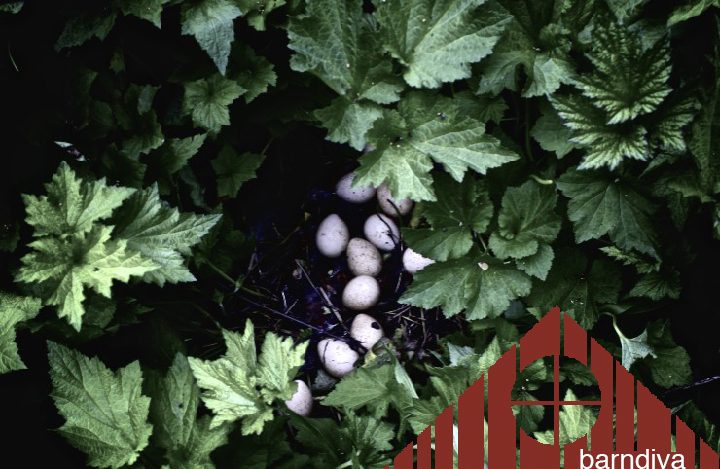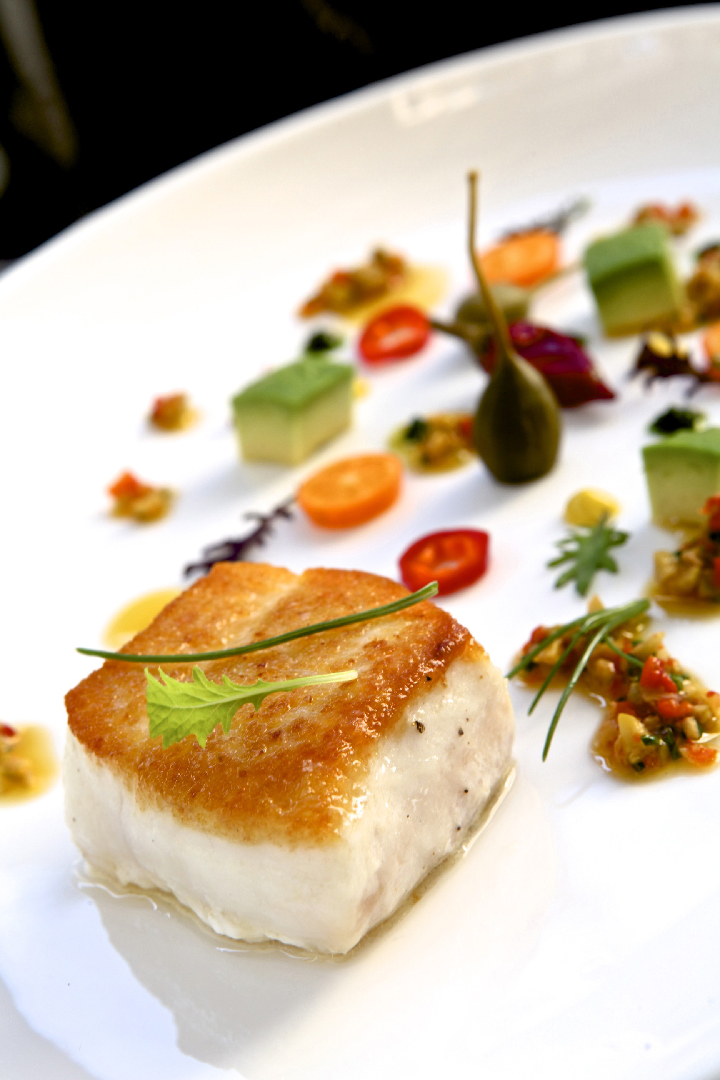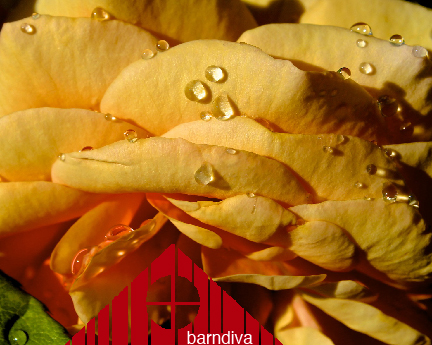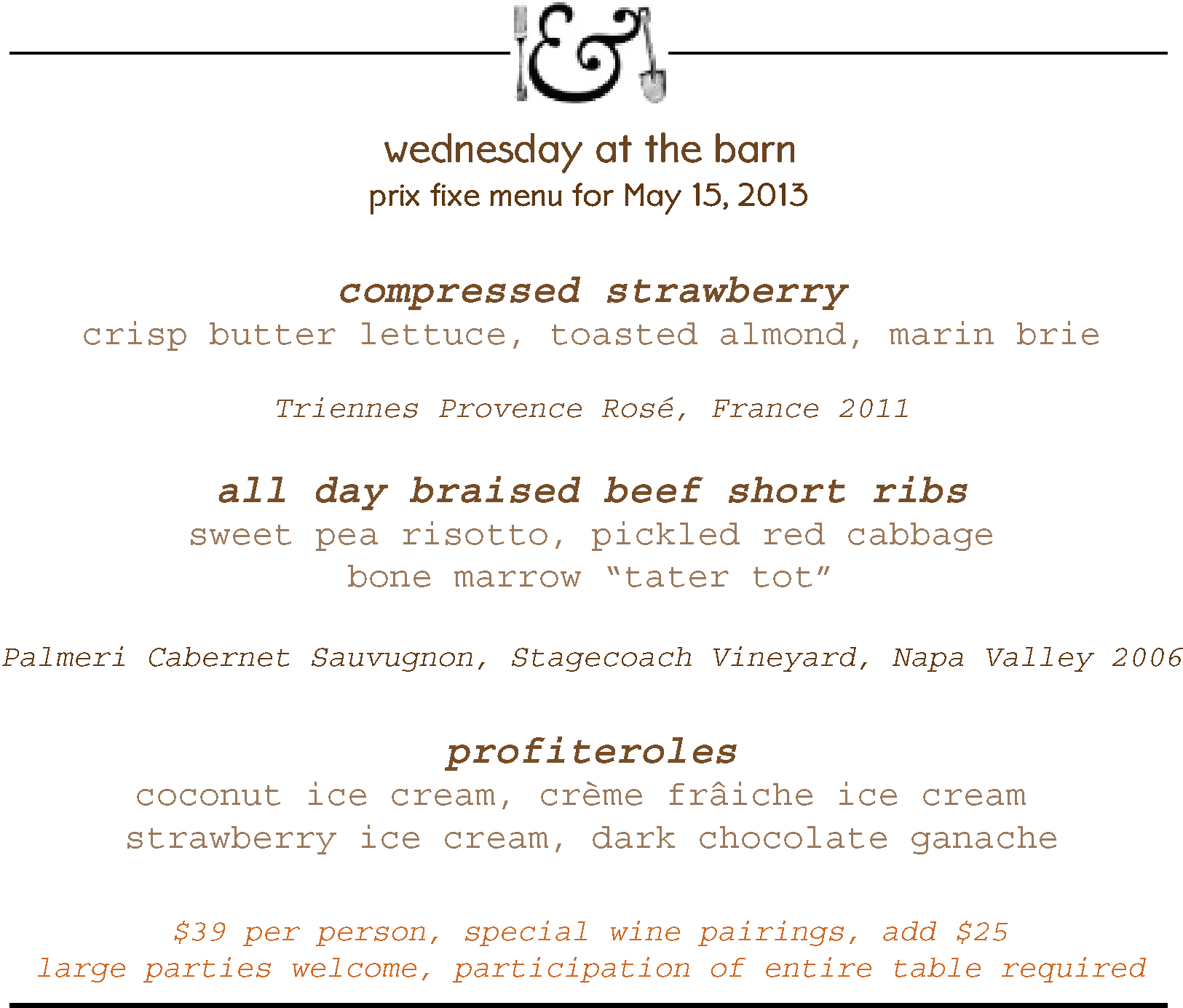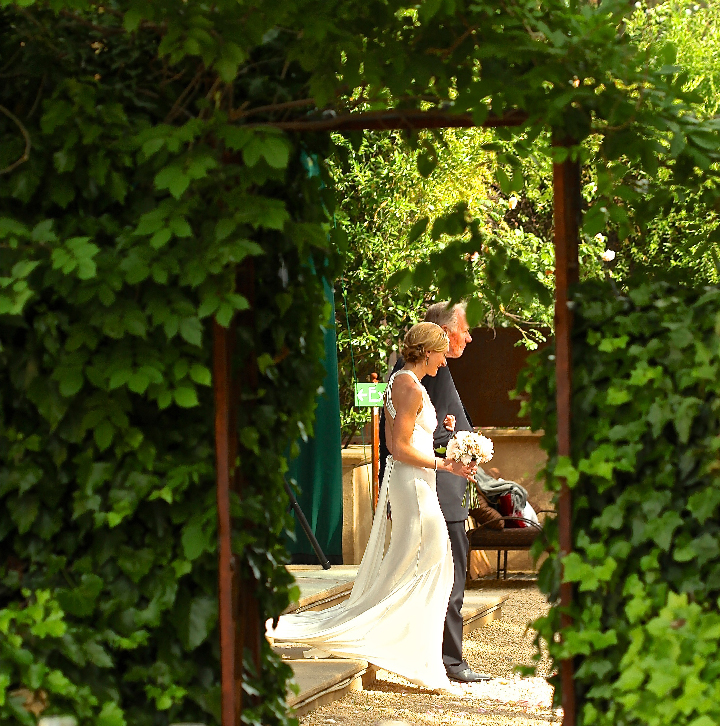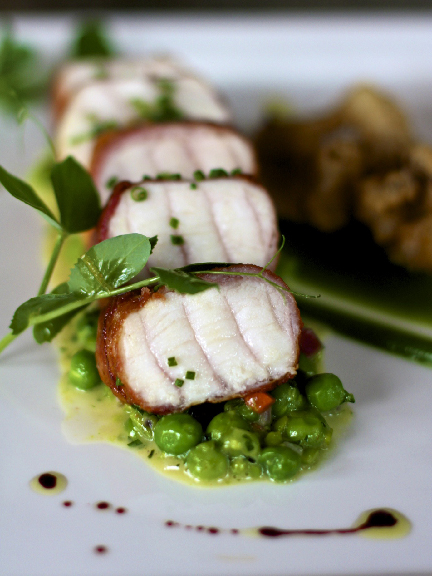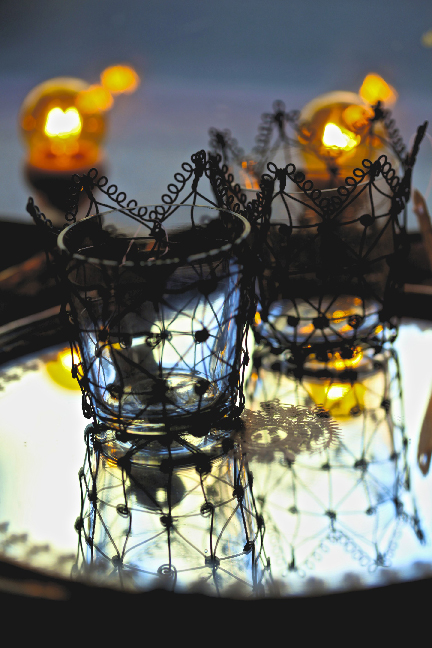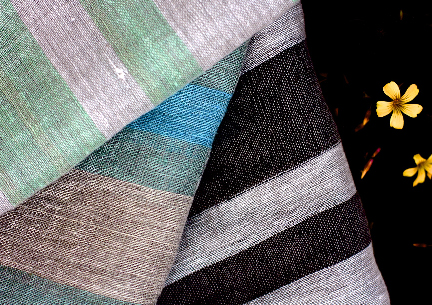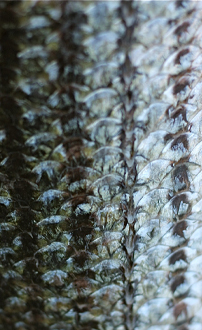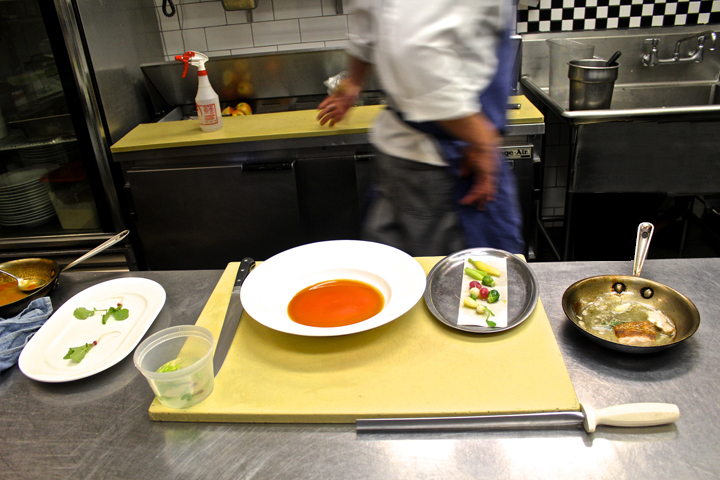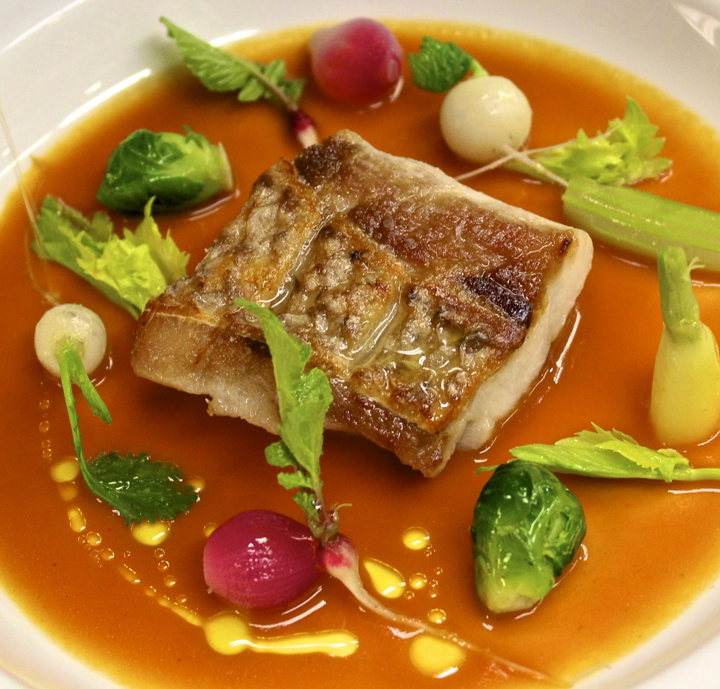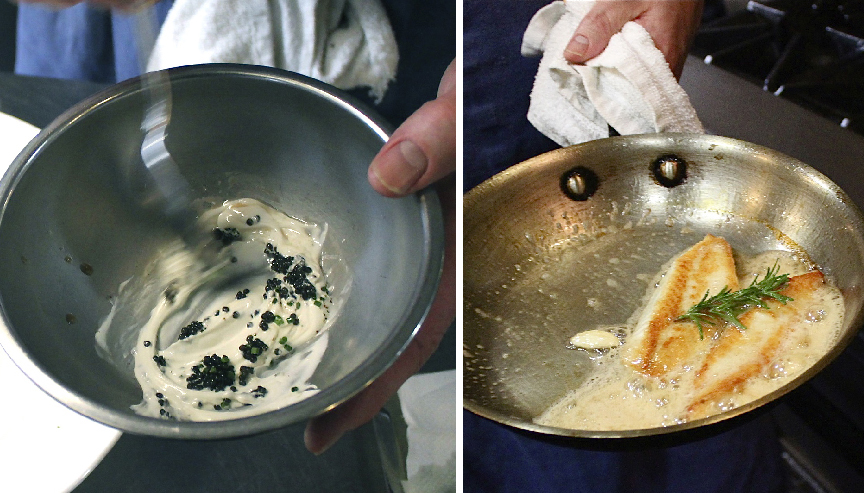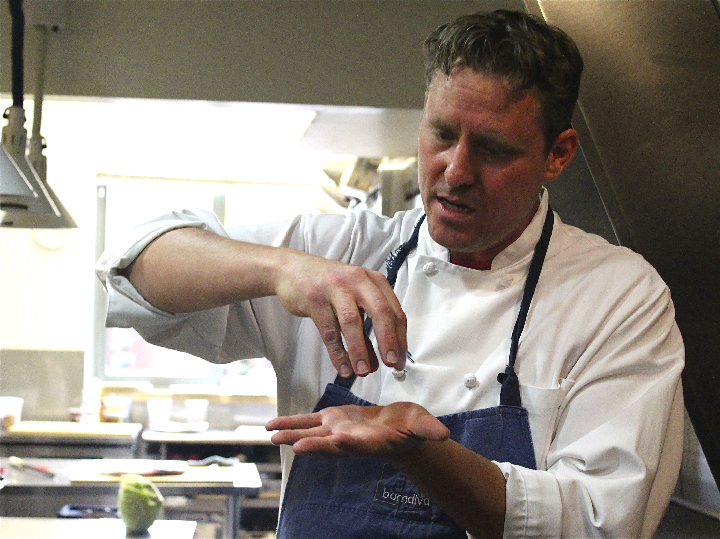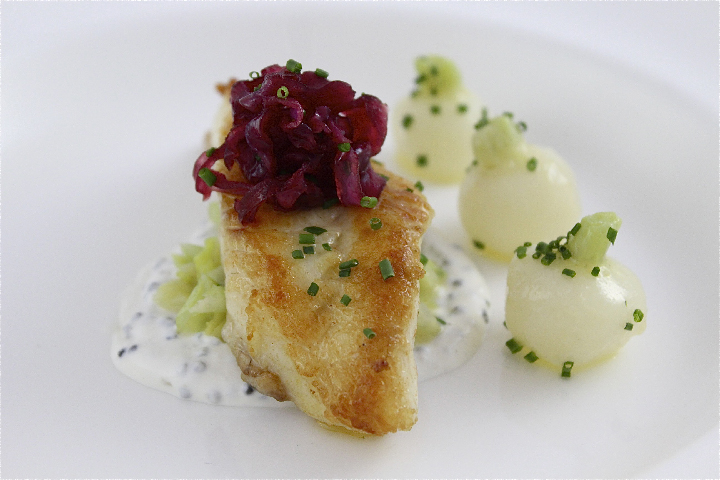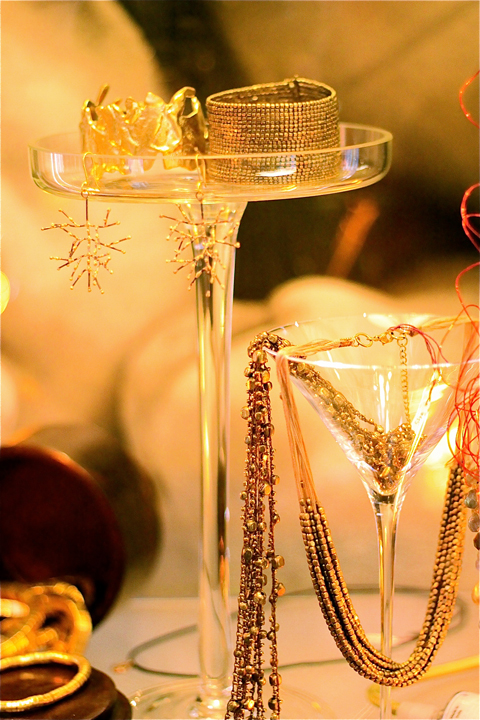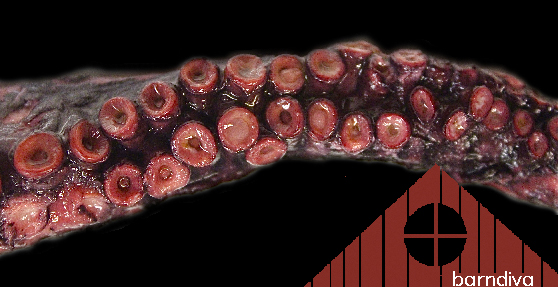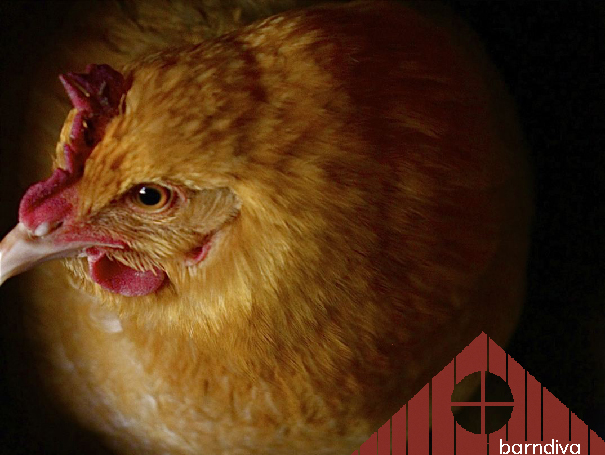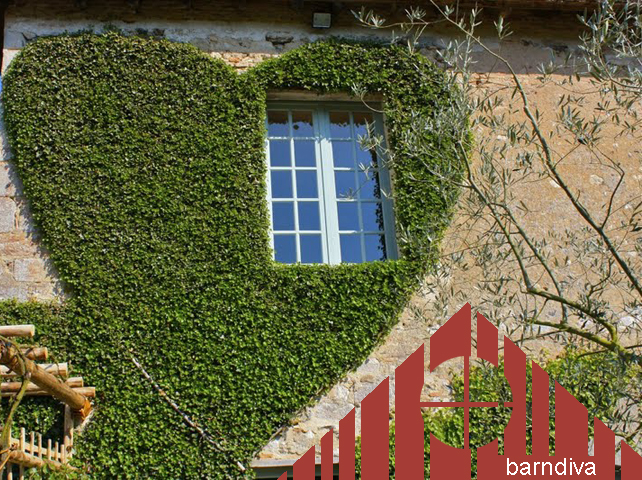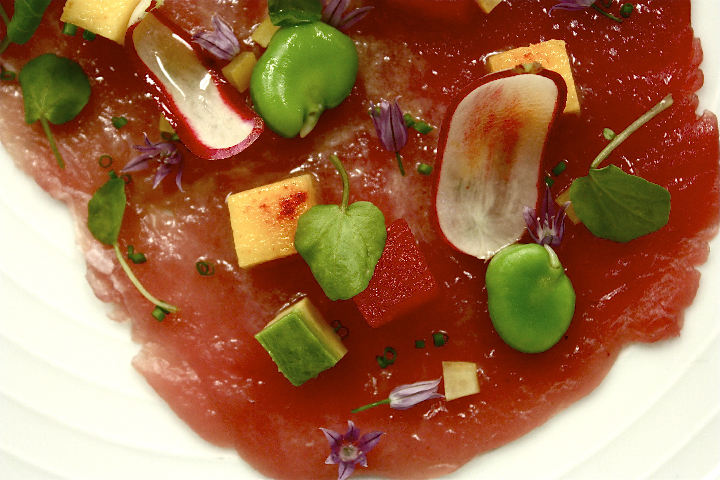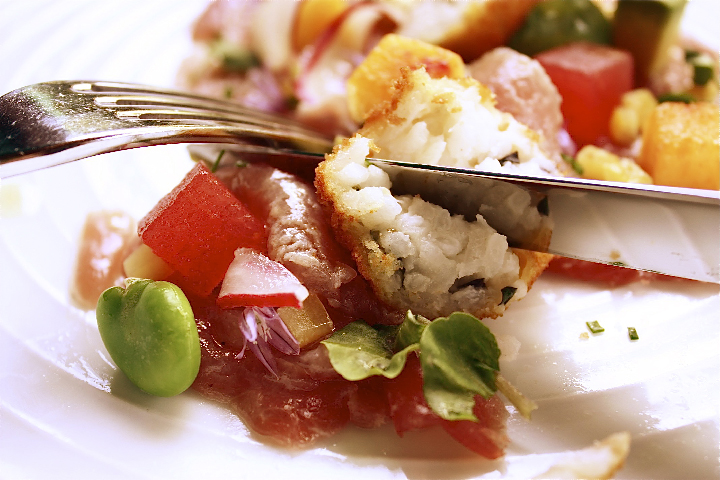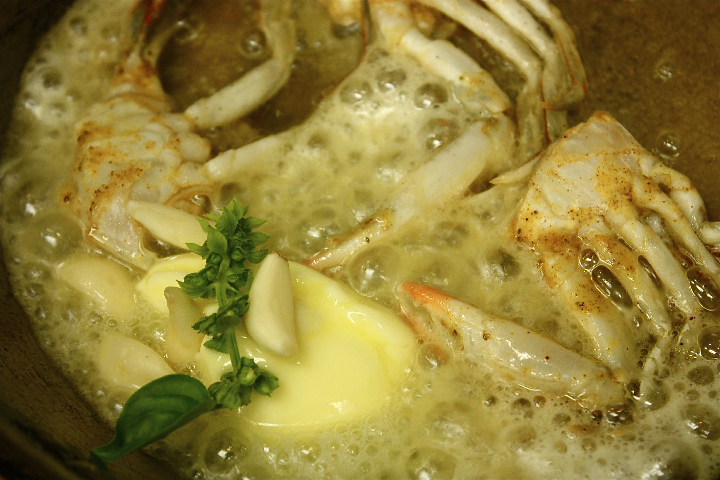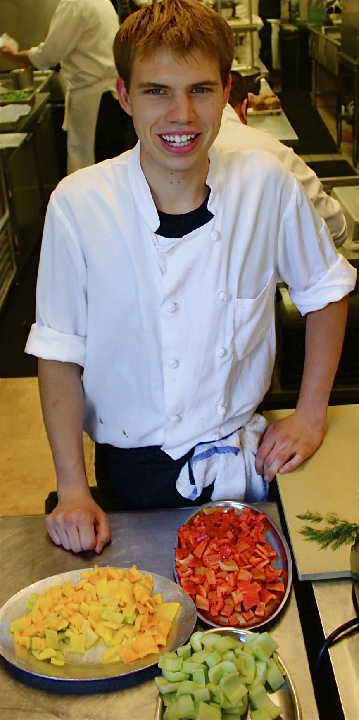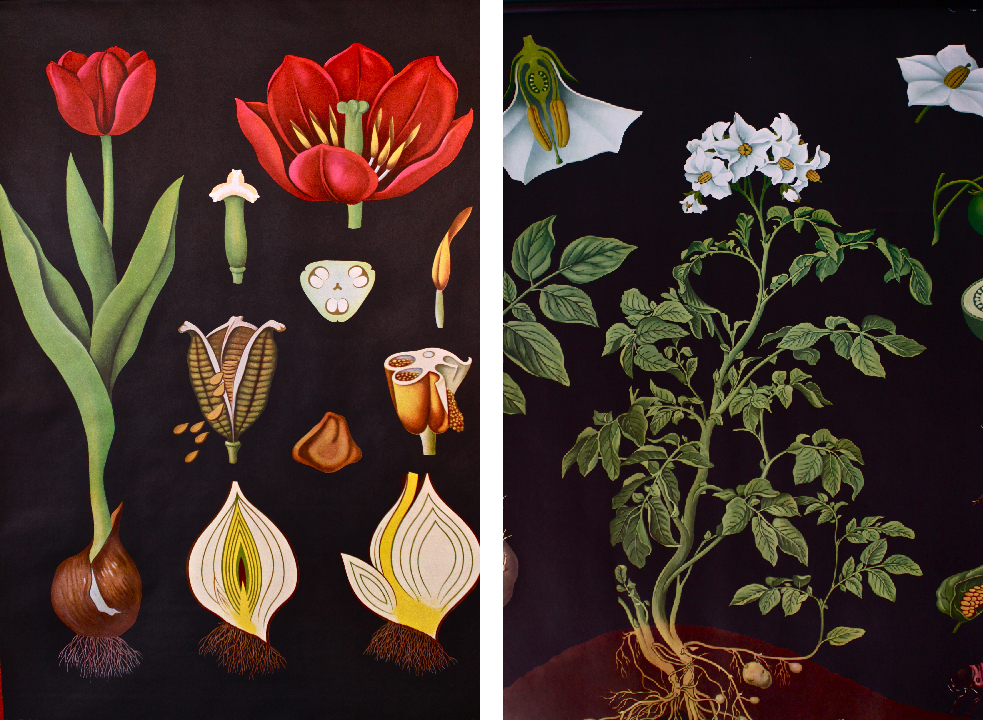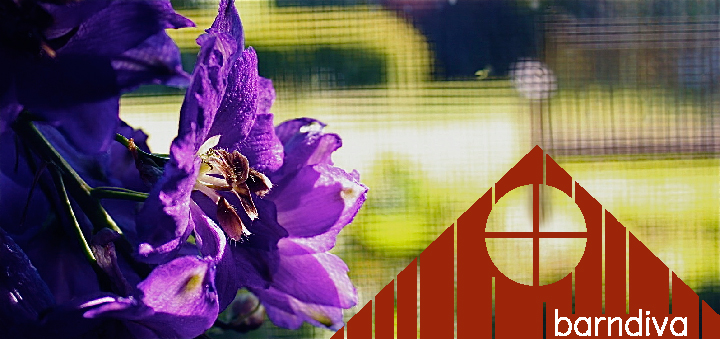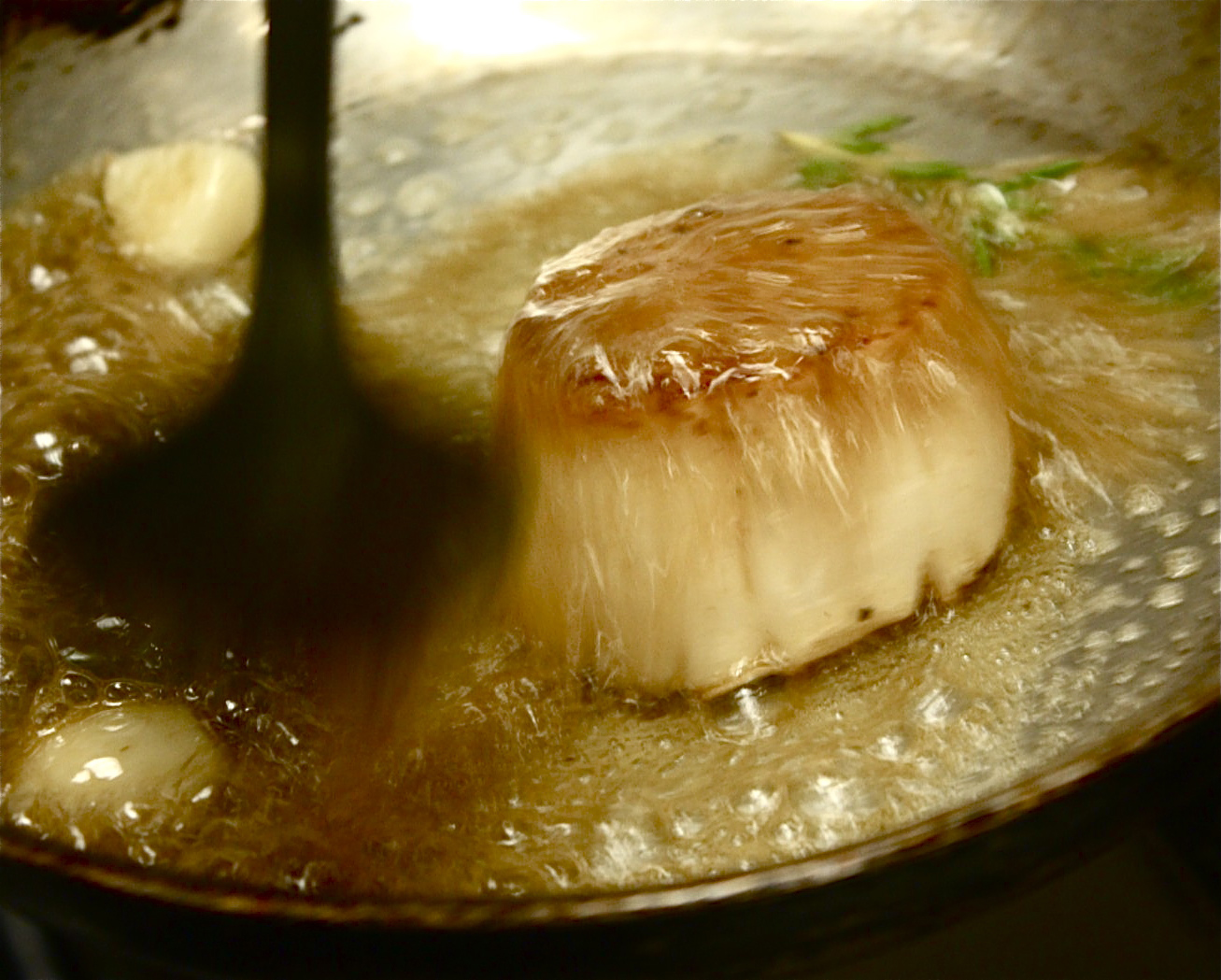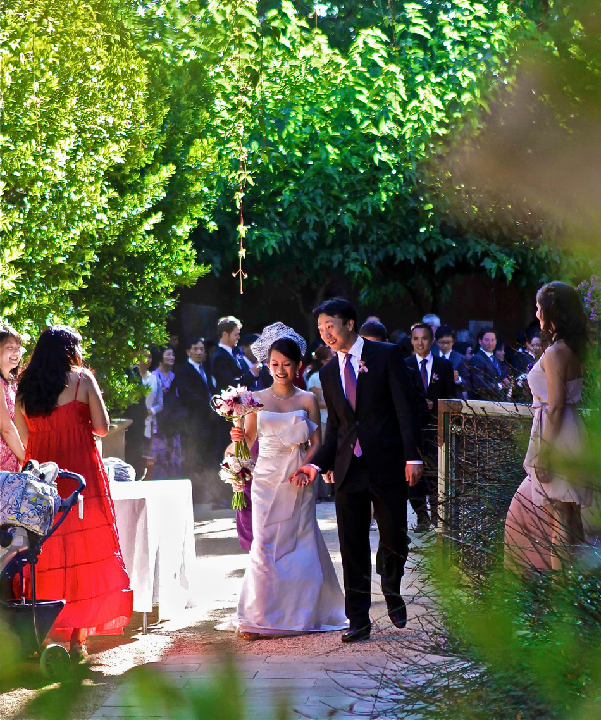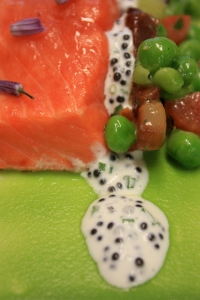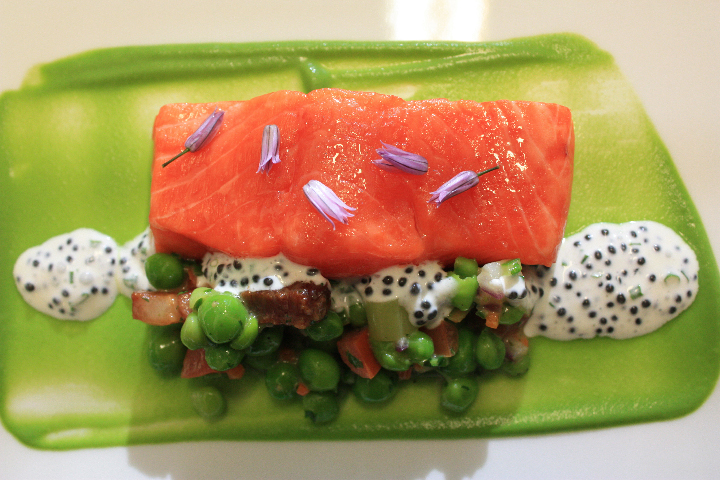

Dish of the Week
A Mid-Summer Tasting Menu
There’s a big difference between the food snob who can bore you silly about the 24 course Omakase he had in Japan just last week and the diner who has yet to step up and put a single meal of his life in the hands of a talented chef, but I’m willing to bet that for most of us, cost, time, and the fear of disappointment does a juggling act in our heads whenever we come upon the Tasting Menu option. Because it’s expedient, restaurants insist an entire table order a Tasting Menu; it only takes one diner to say "I”ll pass" and the decision has been made for you. Which makes the growing success of Barndiva's Tasting Menu curiousier and curiouser. In a good way of course, but still…
 Common sense implies that as Ryan’s reputation has grown, so too has the desire to follow a meal where he will take it if you let him. Chef is a very smart guy, secure in his talent, he knows that’s only part of the story. A gentle price and a shorter dance card, with fewer courses longer on taste also factor into making his Tasting Menu “OMG” (the most frequent description we read on the comment cards each week.) But while Ryan and the brigade take great pride in crafting sequential course dining that guides guests on a visually stunning, soulfully satisfying experience, the role sublime ingredients play is key to how far Chef (for that matter any chef, no matter how talented), can truly extend flavor.
Common sense implies that as Ryan’s reputation has grown, so too has the desire to follow a meal where he will take it if you let him. Chef is a very smart guy, secure in his talent, he knows that’s only part of the story. A gentle price and a shorter dance card, with fewer courses longer on taste also factor into making his Tasting Menu “OMG” (the most frequent description we read on the comment cards each week.) But while Ryan and the brigade take great pride in crafting sequential course dining that guides guests on a visually stunning, soulfully satisfying experience, the role sublime ingredients play is key to how far Chef (for that matter any chef, no matter how talented), can truly extend flavor.

Once upon a time the measure of a Tasting Menu was in how many courses the Chef sent out. Even if you didn't lose count during the meal, it was a recipe for a nice little food hangover the next day. Then there was a man I knew once who was convinced all menus were Tasting Menus, providing everyone at the table (his optimum number was four) ordered different things and paid special attention to dishes the chef was best known for. In awkward mouthfuls passed across the table (sounds like a server’s nightmare) I suppose he got some sense of a restaurant's oeuvre ~ but I think this misses the point entirely as well. While there is certainly a 'greatest hits' aspect to a memorable Tasting Menu, it is, like the counting of plates, but a small part of their ineffable charm. Tasting Menus are first and foremost a celebration: of seasonality, of the beauty to be found in a parade of exquisite plates, of the art of building flavor profiles as courses unfold through calibrated beginnings, sustained middles, and multiple endings. When that end finally does come you should trundle off home in a mood of complete satiety bordering on joy.

Ryan’s touchstone is surprise ~ his own, as he pushes his boundaries, and the guest on the other side of the kitchen door, who really has only a cursory idea of what they will be eating. We print a different Tasting Menu each week, but it's little more than a literary enticement, one that can advise us on any allergies we need to avoid ~ it leaves more out, than in, by design. The fun is in giving up control, in stopping mid-conversation to ohh and ahh as another plate arrives. There should be just enough of each course to get you to the last bite wishing you had one bite more.

Timing is crucial. Tasting Menus are high wire acts: for the kitchen (especially our small kitchen), which has to concurrently contend with a full board of à la carte orders, and for the guest, seduced by a visual joy ride that attempts to raise the bar with each course as it explores, modulates and simply yet elegantly pulls out all the stops when it comes to taste, texture and aroma. Too many dishes delivered too fast and a diner can end up feeling they’ve spent the evening speed dating at MOMA. Too slow and you kill the momentum which should be building with each course. There should be just enough time to linger and memorialize the ingredients of each dish so when they appear again, like characters in a story whose personalities keep evolving, you make the connections. Incandescent melon flirts with crab in an amuse-bouche before taking a sexier approach, compressed with lemongrass, in a vibrant heirloom tomato salad Ryan calls "king of the summer." Squash, first encountered as a blossom in a delicate tempura over a creamy lobster risotto returns a few courses later stuffed Provinçial style, all garlicky crunch, sweet hot mustard, bright green herbs.
 Seasonality is a major inspiration, but it should not be considered a mandate. A potato is a potato is a potato ~ delicious all year round. Drew’s pomme de terre can make you weep, pair it with crème de morel, tiny garlic chips and chive blossoms and you have rich, creamy, salty, earthy, sweet. Would it be wonderful in autumn or winter? Yes, but crowned with a perfect piece of halibut you have an ode to summer you will never forget.
Seasonality is a major inspiration, but it should not be considered a mandate. A potato is a potato is a potato ~ delicious all year round. Drew’s pomme de terre can make you weep, pair it with crème de morel, tiny garlic chips and chive blossoms and you have rich, creamy, salty, earthy, sweet. Would it be wonderful in autumn or winter? Yes, but crowned with a perfect piece of halibut you have an ode to summer you will never forget.

In reviewing our Tasting Menus from the past year, I realize they are as much a journal of our days here at Barndiva as the blog. Someday we will look back and talk about Ryan’s Tasting Menus at Barndiva in 2012, the year baby Rylee was born, and know, for all the hard work it took .... good times.

A word about wine pairing the Tasting Menu: while we never forget Barndiva is in the heart of wine country, Brendan O'Donovan, a wonderful sommelier, is careful not to overwhelm dishes whose pedigree vintages may be remarkable on their own but neglect to take their cue from the food. Wine is paired with the dish, rather than the other way around. Connections are there if you look for them ~ in the July Tasting Menu, the fish course incorporates a vibrant Pinot reduction with the halibut, which Brendan complimented by a lighter Pinot in the glass (yes, Virginia, you can drink red with fish) allowing the next course ~ a rich grass fed beef filet ~ to be paired with a commanding bordeaux .
It’s all in the details, but they need to come naturally to the plate and the mouth. His notes for the July Tasting Menu are below.

With the Amuse: Azur Syrah Rosé, California 2011
Watermelon, Crispy Proscuitto, and Crab Salad? I can't think of
anything I'd rather have than Azur Rosé. Light, dry, and crisp,
this gorgeous wine made by Julien Fayard is a small production
local gem. This wine is no afterthought; the vineyards are
carefully chosen and the grapes are grown just to make a beautiful
Rosé wine.
With the first course: Simmonet-Febvre 1er Cru Vaillons, Chablis 2009
Vaillons is sandwiched between the prestigious Grand Cru of Les
Clos and the well-known Premier Cru Mountains. Showcasing a
bright, clean style, this wine is 100% Chardonnay. It is an
embodiment of a beautiful Chablis with notes of green apple,
lemon peel and crushed oyster shell; a hint of fresh fennel on the
finish sets this effort apart. This wine is a match made in heaven
for the Lobster Risotto accentuated with crème fraîche.
With the second course: Navarro "Methode a l'Ancienne" Anderson Valley Pinot Noir 2007-
A gorgeous wine from Navarro, their award-winning flagship Pinot
displays light red fruits, silky tannins, and a pleasant earthy
character reminiscent of Burgundy. It showcases some of the best
of what Anderson Valley and our old friends at Navarro produce. The
earth notes play off of the chanterelles, while the bright fruits
and background acidity show beautifully in contrast to the delicate
white fish and sweet summer corn.
With the Third Course: Lasseter 'Paysage' Bordeaux Blend, Sonoma Valley 2008
This is the flagship wine from relative newcomer Lasseter Winery in
Sonoma Valley. Their inaugural effort, this impressive wine is
inspired by the wines of St. Emilion. Well balanced and food
friendly, this Merlot-based wine truly reflects the French style.
Paired with Filet of Beef and Squash Provençal, the dark fruit,
tea and earth tones are a perfect compliment.
With the Fourth Course: Cossart-Gordon 10yr Bual Madeira
Bual Madeira, while oft-overlooked, is a prize pairing with our
Chocolate Bavarois. This fortified wine is only lightly sweet, not
cloying as some dessert wines can be. The character of this wine,
with notes of nuts, coconut, and chocolate is reminiscent of a fine
tawny port. Lingering brandied fruit character pays delicate
homage to the cherries and a note of sweet saltwater air plays well
with the sprinkle of Maldon salt on the chocolate. The perfect
finish to a evening of stunning wine and food.
Truffles are served with Coffee, Herbal Teas, and a wonderful selection of Digestifs.
Eat the View.
All text Jil Hales. All photos Jil Hales (unless otherwise noted.)
